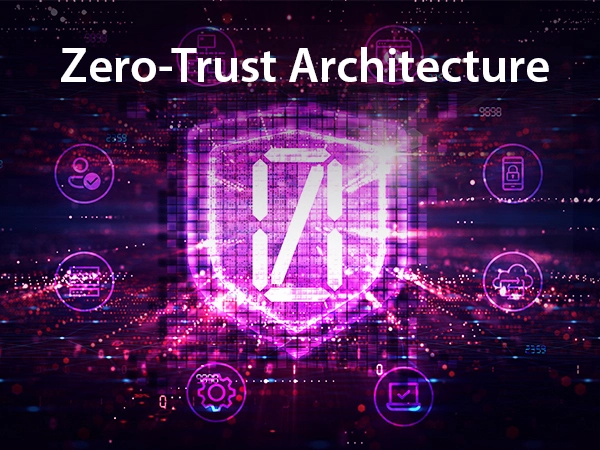Index
- Introduction
- Understanding Digital Threat Monitoring
- The Key Components of Digital Threat Monitoring
- The Benefits of 63SATS Digital Threat Monitoring Services
- What types of internet threats does 63SATS examine, and what is the extent of their surveillance?
- How regularly should companies conduct surveillance of online risks to stay updated with the evolving cyber threat landscape?
- Conclusion
- FAQs
Businesses continuously face cyber threats that jeopardize their operations, data and reputation. It is critical to monitor these online threats vigilantly to safeguard companies against persistent assaults. As risks become sophisticated, it is very important to act quickly to stay ahead. This blog looks at why it is significant to monitor threats on the internet and how collaboration with 63SATS can make your business’s defense against cyber attacks stronger.
Understanding Digital Threat Monitoring
a. Defining Digital Threat Monitoring
Digital Threat Monitoring is an advanced and detailed strategy for cybersecurity that seeks to identify, investigate, and respond swiftly to potential risks. It goes beyond standard security practices by constantly observing digital environments to quickly detect abnormal behavior and possible breaches of safety. Essentially, it acts like a protector for the firm’s digital treasures, handling threats before they escalate into significant safety issues.
For comprehensive cyber security, it is very important to look for digital threats as this step serves as the first line of defense. This involves using sophisticated tools, technologies and frameworks to monitor various internet routes, networks and links. The goal is to maintain the integrity, privacy, and accessibility of the data by constantly identifying and removing potential threats. Continuous monitoring is essential to this approach because risks are continuously evolving and require persistent vigilance.
b. Differentiating Digital Threat Monitoring from Traditional Security Measures
Traditional security methods often rely on stable defenses such as firewalls and antivirus programs to protect against known risks. However, the online world has evolved, and current threats are adaptable, sophisticated, and frequently shifting in form. Digital Threat Monitoring acts first, understanding that using only predefined signatures is not enough.
The difference lies in the speed and responsiveness of digital threat monitoring. Traditional methods may give a sense of security, yet they frequently respond only once threats have penetrated the systems. Digital threat monitoring is active and takes place right away. It always searches for things that are unusual, identifies fresh threats when they appear, and rapidly responds to lessen potential risks.
Today’s risks, like zero-day attacks, polymorphic malware and sophisticated persistent threats, require a monitoring approach that can adjust rapidly. Digital Threat Monitoring meets this need by employing technologies such as machine learning, behavioral analysis and threat intelligence feeds to swiftly adapt to these emerging dangers. This technique ensures businesses are protected from known threats as well as fortified to face new and unforeseen challenges in cybersecurity.
The Key Components of Digital Threat Monitoring
1. Threat Detection
Digital threat monitoring’s strength lies in its swift detection and awareness of potential threats, which is crucial for its effectiveness. It employs advanced technology such as machine learning and behavior analysis, along with databases containing details on threats, to scan the internet for any abnormal activities that could signal a security hazard. Old methods rely on recognizing familiar signs, whereas digital risk monitoring operates proactively. It identifies trends and alterations that might signal upcoming new dangers. This method for identifying threats in real-time enables teams to respond quickly and prevent cyber attacks before they result in damage.
1. Vulnerability Analysis
Regularly searching for vulnerabilities is a crucial aspect of monitoring digital threats. This involves examining systems and applications closely to identify any areas that could be exploited by hackers. Organizations make their cybersecurity stronger by addressing weak spots before they turn into issues. They utilize sophisticated instruments and technology for digital risk monitoring, conducting thorough inspections to identify vulnerabilities promptly. Concentrating on continuous analysis makes sure that as soon as new vulnerabilities emerge, they are quickly discovered and managed to maintain robust protection against online issues.
3. Incident Response
When there is a problem with security, it’s critical to pay close attention to digital threats because it allows for fast and effective responses. Monitoring the internet closely helps in defending against cyber risks by providing current information on these issues as they occur. Discovering problems early allows teams to initiate a fast and targeted response to reduce the impact of security issues. Reacting quickly is crucial in incident management, and keeping an eye on online threats ensures that organizations can rapidly isolate affected systems, manage breaches in security, and resume normal operations. Acting proactively minimizes the duration and severity of issues, safeguards the company’s reputation, and reduces financial losses.
The Benefits of 63SATS Digital Threat Monitoring Services
a. Tailored Solutions for Your Business
63SATS stands out as it offers tailored digital threat monitoring solutions that are shaped to meet the specific needs of each client. Recognizing that every business operates in a unique environment with distinct challenges, 63SATS ensures its solutions do not adopt a one-size-fits-all strategy for all. Customization extends beyond understanding common industry guidelines and delves into the specific configuration of each company. This approach demonstrates the adaptability and modifiability of 63SATS solutions, ensuring that clients receive a cybersecurity strategy tailored precisely to their requirements. When companies use a tailored approach, they can address their own weaknesses and particular risks, which improves their overall defense.
b. Proactive Risk Mitigation
63SATS’s digital threat monitoring not only searches for threats but also aims at early action to minimize risks. It is crucial to prevent issues from escalating in order to diminish the damage caused by cyber threats. By acting early to discover and lessen risks, 63SATS assists businesses in stopping security issues from getting bigger. This proactive method guards vital information and assets, also helping maintain continuous business operations. Taking early action to lessen risks has benefits beyond present concerns, establishing a robust cybersecurity environment adaptable to emerging threats.
c. Real-Time Reporting and Analysis
The monitoring services for online threats from 63SATS allow companies to view incidents in real-time, offering them real-time information. In the fast-paced environment of cybersecurity, receiving immediate notifications and evaluations is crucial for informed decision-making. 63SATS offers customers up-to-date information on potential hazards, enabling them to make swift decisions. This immediate reporting aids in quick response to events and also enables businesses to adjust their safety strategies ahead of the appearance of new risks. The combination of real-time reporting and timely analysis creates a proactive cybersecurity stance, keeping businesses ahead of potential risks.
What types of internet threats does 63SATS examine, and what is the extent of their surveillance?
63SATS covers a broad spectrum of digital threats, including malware, ransomware, phishing attacks, and more. They present an extensive shield to preserve businesses from diverse internet dangers that could disrupt operations or endanger confidential data.
How regularly should companies conduct surveillance of online risks to stay updated with the evolving cyber threat landscape?
The frequency of digital risk monitoring varies based on the type of company, the number of cybersecurity challenges it encounters, and regulatory requirements specific to its sector. Constant vigilance is recommended in order to stay abreast of evolving internet risks and to promptly respond to emerging issues.
Conclusion
In the contemporary cybersecurity landscape, digital threat monitoring is pivotal. Recognizing the urgency for proactive measures against cyber threats, 63SATS stands out as a reliable partner, offering tailored solutions, proactive risk mitigation, and real-time reporting for enhanced cybersecurity defenses.
To elevate your business’s cybersecurity defenses, explore 63SATS’s digital threat monitoring services. Visit https://www.63sats.com for more information.










